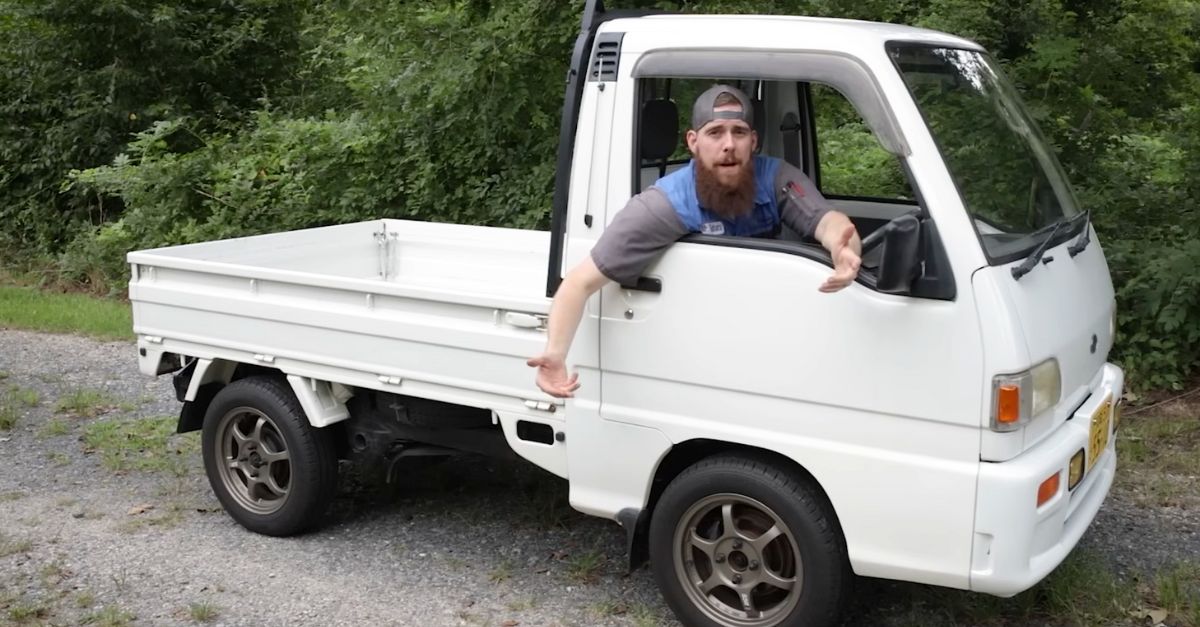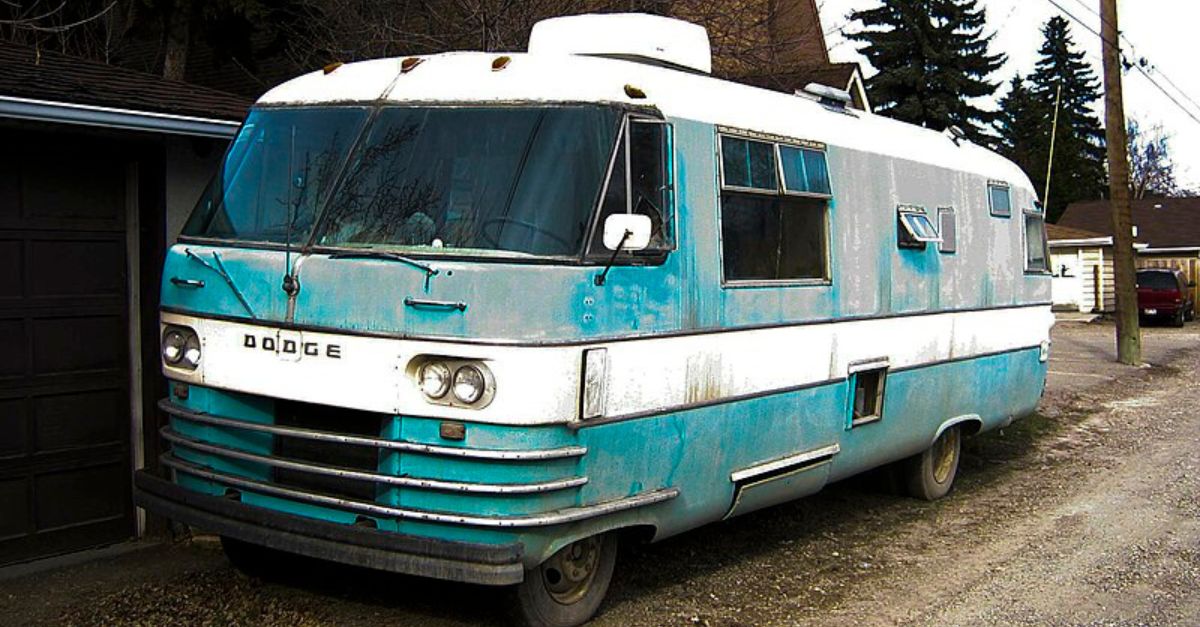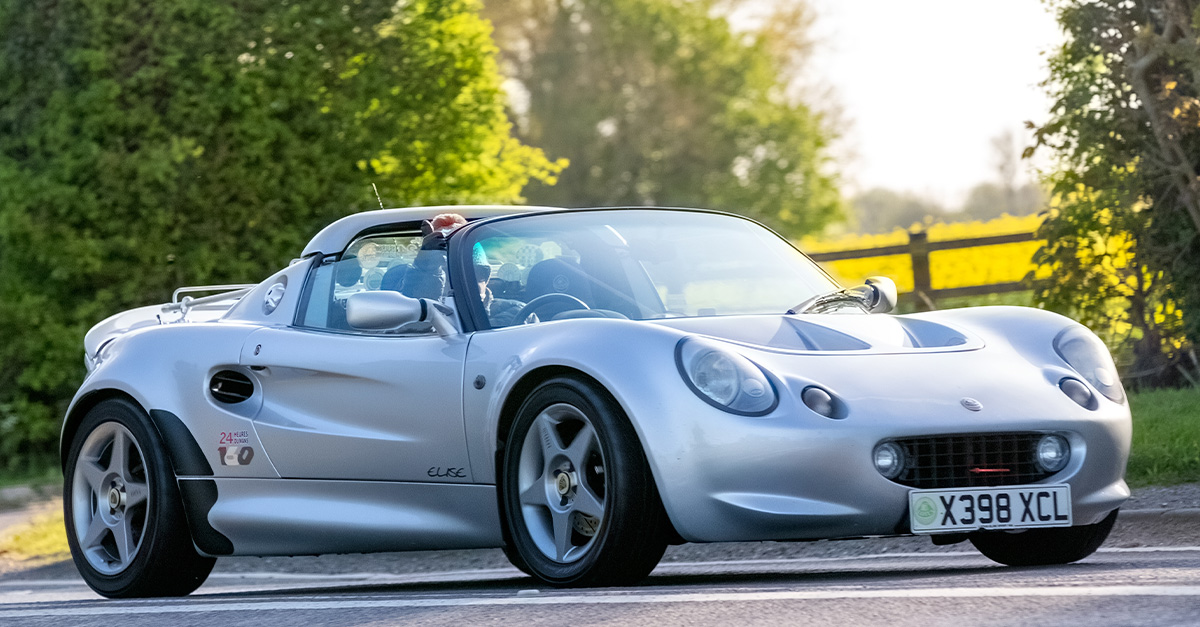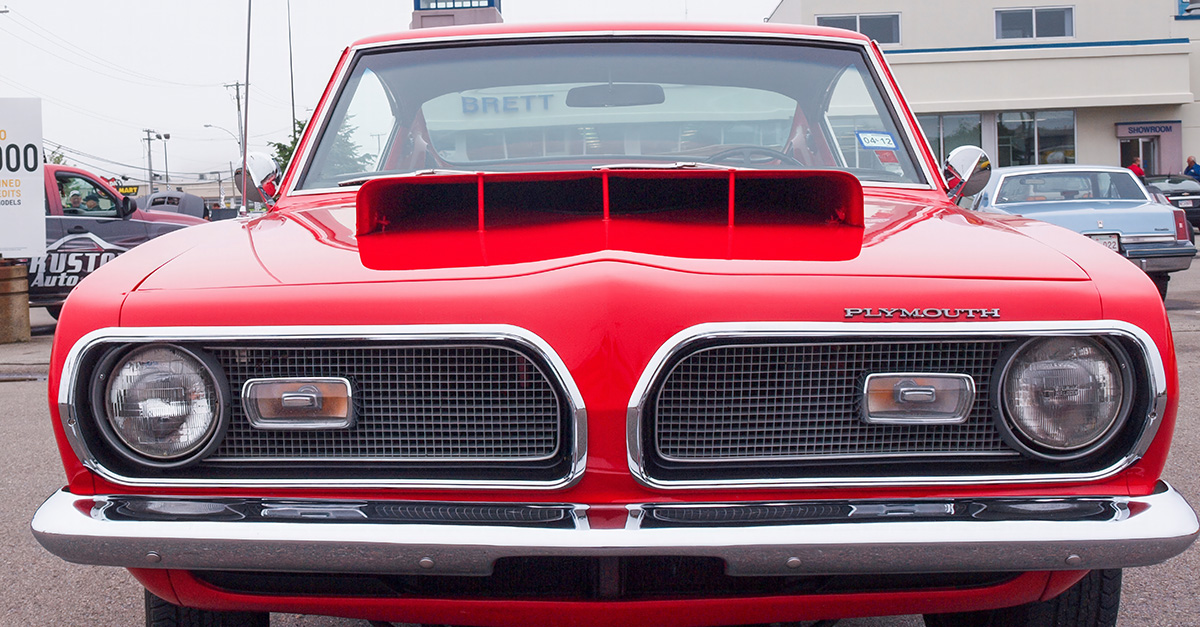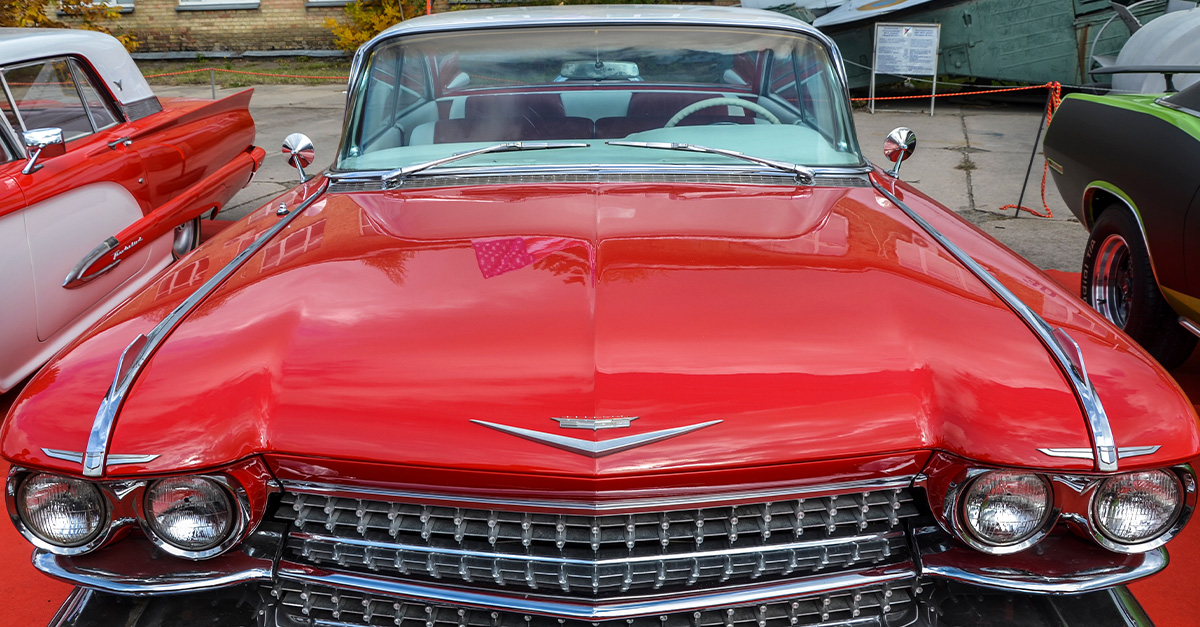A Modest Truck Sparked A National Identity Crisis
A truck that usually travels at 55 mph is shaking up American road laws. Once a quiet workhorse in Japan, it’s now fueling policy battles and unexpected controversy.

Why This Tiny Truck Is Suddenly Everywhere
Japanese Kei trucks, compact and efficient, are gaining popularity in the US. Their affordability and unique design make them appealing for various uses. The rise in popularity reflects a growing interest in practical, economical vehicles that contrast with traditional American pickups.
 Tokumeigakarinoaoshima, Wikimedia Commons
Tokumeigakarinoaoshima, Wikimedia Commons
A Quirky Import That’s Capturing American Hearts
Kei trucks, known for their distinctive appearance and versatility, are winning over American drivers. Their compact size and functionality suit both rural and urban settings. Enthusiasts appreciate their simplicity and the charm of owning a unique vehicle that stands out on the road.
 Ruslan V Albitsky aka pauk, Wikimedia Commons
Ruslan V Albitsky aka pauk, Wikimedia Commons
Cute, Capable—And Somehow Controversial
Despite their appeal, Kei trucks face legal challenges in several US states. Concerns over safety standards and emissions compliance have led to restrictions and sparked debates among policymakers and enthusiasts about their place on American roads.
 Marvin Samuel Tolentino Pineda, Getty Images
Marvin Samuel Tolentino Pineda, Getty Images
What’s So Special About A Kei Truck, Anyway?
Kei trucks are designed to meet Japan's strict vehicle regulations, featuring engines under 660cc and compact dimensions. Their design emphasizes efficiency, which makes them ideal for tasks like light hauling and navigating narrow streets. Such unique traits set them apart from typical American vehicles.
 Mr.choppers, Wikimedia Commons
Mr.choppers, Wikimedia Commons
Designed For Tight Spaces And Big Jobs
Originally built for Japan's narrow roads and dense cities, Kei trucks offer surprising utility. Their small footprint allows for easy maneuverability, while their cargo beds provide ample space for transporting goods, which makes them valuable for various industries and personal use.
The Government Rules That Created A Vehicle Class
Japan's Kei vehicle category was established to promote affordable, efficient transportation. Regulations limit size and engine capacity, encouraging manufacturers to innovate within these constraints. This led to the development of versatile vehicles like Kei trucks, which have found a niche market abroad.
 dave_7 from Lethbridge, Canada, Wikimedia Commons
dave_7 from Lethbridge, Canada, Wikimedia Commons
How 660cc Became The Engine Of Everyday Japan
The 660cc engine size cap for Kei vehicles was implemented to reduce emissions and promote fuel efficiency. This limitation pushed manufacturers to optimize performance within these bounds, resulting in reliable and economical engines that power a significant portion of Japan's light vehicles.
 Kei Trucks - Why Are They So Popular In The United States? by Shooting Cars
Kei Trucks - Why Are They So Popular In The United States? by Shooting Cars
Kei Trucks Were Built For Simplicity, Not Stardom
Kei trucks prioritize function over form with straightforward designs and minimalistic interiors. With a focus on utility and cost-effectiveness, they have become staples in various sectors. Their recent popularity in the US highlights a growing appreciation for practical, unpretentious vehicles.
 dave_7 from Lethbridge, Canada, Wikimedia Commons
dave_7 from Lethbridge, Canada, Wikimedia Commons
Compact But Surprisingly Capable
Despite their modest size, Kei trucks are remarkably strong. Many offer payload capacities between 770 and 1700 pounds. This is enough for garden tools or farm goods. Their low beds and lightweight chassis make loading and unloading easier, while their mechanical simplicity means fewer electronic components to break or maintain compared to modern trucks.
Flat Beds And Folding Sides
One of the Kei trucks' standout features is their flatbed design with fold-down side panels. This turns the cargo area into a flexible, open platform—perfect for odd-shaped items. Landscapers and DIYers appreciate the versatility and fast-loading convenience this functional layout provides for everyday tasks.
 Daihatsu Hijet Mini Truck - Start It Up! by Philip Blank
Daihatsu Hijet Mini Truck - Start It Up! by Philip Blank
Rugged Enough For Farms, Cute Enough For Cities
These trucks seamlessly balance hard-working grit with city-friendly dimensions. Farmers use them in orchards and vineyards, while urbanites admire their charm and maneuverability. Their short wheelbase lets them slip through narrow alleys or dense parking lots—yet their durability makes them a reliable tool on tough terrain, job sites, or backroads.
 Mr.Churasan, Wikimedia Commons
Mr.Churasan, Wikimedia Commons
It’s What’s Not Inside That Wins Fans Over
Forget infotainment screens and plush interiors—Kei trucks offer stripped-down cabins with just the essentials: steering wheel and basic controls. For many, that’s the appeal. With fewer distractions and simple mechanics, the driving experience becomes refreshingly raw, making it easier to repair without costly diagnostics.
 Kotaro Negawa(Kotaro Negawa), Wikimedia Commons
Kotaro Negawa(Kotaro Negawa), Wikimedia Commons
Why Americans Are Falling In Love With Them
Americans are discovering in Kei trucks what they miss in many modern vehicles: affordability and charm. They’re approachable and useful and stand apart from flashy SUVs and oversized pickups. This reflects a broader cultural shift, where practicality and personality matter more than horsepower or high-tech features in daily driving.
 Kei Trucks - Why Are They So Popular In The United States? by Shooting Cars
Kei Trucks - Why Are They So Popular In The United States? by Shooting Cars
From Workhorse To Cult Icon In Just 25 Years
Thanks to the 25-year import rule, many Kei trucks from the 1990s are now eligible for US roads. Once limited to rural Japan, these once-overlooked workhorses are now collectible curiosities. Their age grants them historic vehicle status, further elevating their status among nostalgic drivers and automotive adventurers.
How Social Media Turned Kei Trucks Into Stars
Platforms like Instagram and TikTok gave Kei trucks global visibility. With their boxy frames and photogenic quirks, they became viral sensations. Influencers now show off-road trips and mods, fueling demand and curiosity across generations. A new digital fanbase emerged and changed humble haulers into social media darlings.
For Some, It’s A Tool, But For Others, It's A Toy
While farmers and tradespeople value them for utility, collectors and hobbyists view Kei trucks as customizable canvases. Some owners repaint or modify them for car shows. Others keep their stock for function. That dual identity as a practical tool and playful project makes them especially appealing across various lifestyles and age groups.
A Rule That Opened Doors
The 1988 Imported Vehicle Safety Compliance Act gives vehicles over 25 years old a clearance to bypass modern US safety standards. That law, intended for rare classics, accidentally opened the door for Kei trucks. Once they reach the age threshold, they can be imported and registered without meeting contemporary crash or emissions regulations.
 Why Does the 25 Year Rule STOP us from BUYING NEW MINI TRUCKS? by JaxSawJeff
Why Does the 25 Year Rule STOP us from BUYING NEW MINI TRUCKS? by JaxSawJeff
How These Trucks Arrive
Importing a Kei truck involves navigating customs clearance, EPA and DOT forms, and shipping logistics. Once stateside, buyers must handle titling and registration, processes that vary dramatically by state. Some owners register them as antique vehicles; others rely on off-road or farm-use classifications to sidestep road legality challenges entirely.
Buying One Feels Like A Treasure Hunt
With limited supply and rising demand, locating a reliable Kei truck can be surprisingly competitive. Buyers scour auctions and even Japanese exporters. Each truck comes with unique mileage and quirks. Enthusiasts often research for weeks before making a purchase and view it as a rare-find experience.
 First Time Driving a Mini Kei Truck: Moving to a New Apartment in Japan by Born the Builder
First Time Driving a Mini Kei Truck: Moving to a New Apartment in Japan by Born the Builder
The Business Of Nostalgia
A growing network of small import businesses specializes in Kei trucks. Many offer customization services and even frame restorations. They cater to a niche but passionate market that values vintage practicality over modern excess. For these businesses, selling Kei trucks means selling a nostalgic experience, not just transportation.
Legal In One State, Banned In The Next
Kei truck legality differs wildly from one state to another. While Texas, Montana, and North Carolina welcome them for road use, others like Pennsylvania and New York restrict them to private property. This fragmented regulatory map leaves owners frustrated, especially when crossing state lines becomes legally uncertain.
 Austin Texas Kei Truck Show 2024 by Gaming Goddess
Austin Texas Kei Truck Show 2024 by Gaming Goddess
Why Some States Still Won’t Allow Them On Roads
Some states cite safety concerns, like lack of airbags or size mismatch with American vehicles. Others worry about emissions compliance or insurance classification. Despite federal clearance, local DMV rules often override, keeping Kei trucks off the streets. Critics argue these decisions ignore their proven safety record in Japan.
 Kei Truck POV Highway Drive Part 1 (Daihatsu HiJet) by WayBeforeTheFame
Kei Truck POV Highway Drive Part 1 (Daihatsu HiJet) by WayBeforeTheFame
Some Say It’s About Safety—Others Say It’s Politics
Some opponents of Kei truck restrictions speculate lobbying from domestic automakers and insurance groups plays a role. With low-cost imports offering alternatives to pricey pickups, critics argue that bans aren’t just about safety, but they’re about economics. Transparency in policymaking remains a major concern for enthusiasts and small-scale importers.
The AAMVA Memo That Changed Everything
In 2021, the AAMVA issued guidance discouraging on-road use of Kei trucks. Though not legally binding, the memo influenced several states to reevaluate their registration policies. This advisory reshaped legal interpretations overnight to limit access in places where Kei trucks had once been permitted.
Are They Really Unsafe Or Just Unfamiliar?
Kei trucks lack features like airbags and ABS, which leads to assumptions they're inherently dangerous. However, their low speeds and use in non-highway settings reduce risk. In Japan, they're routinely driven in urban areas without issue. Critics argue US safety standards aren’t always proportionally applied to similarly sized domestic vehicles.
No Crumple Zones—Just Steel
True to their utilitarian design, Kei trucks often forgo modern crash protection. Their steel cab offers little in the way of crumple zones. Yet, for low-speed applications—such as farming, landscaping, or short urban trips—they remain viable. Advocates suggest a nuanced safety approach based on use-case rather than blanket regulation.
 Tokumeigakarinoaoshima, Wikimedia Commons
Tokumeigakarinoaoshima, Wikimedia Commons
The Truth About Accidents In The US
Accident data involving Kei trucks in the US is sparse but telling. Most incidents occur off-road or involve single-vehicle scenarios due to inexperience or modifications. Major collisions with larger vehicles are quite rare. Still, insurance carriers and lawmakers often assume worst-case outcomes based on vehicle size rather than practical evidence.
 Kei Truck Accident UPDATE! by WayBeforeTheFame
Kei Truck Accident UPDATE! by WayBeforeTheFame
Owners Say The Risks Are Exaggerated
Owners often point out that Kei trucks are rarely used on highways. Most stick to secondary roads or farms. Many report fewer maintenance issues and simpler mechanics as safety advantages. From their perspective, risks are manageable and overhyped, especially when compared to motorcycles or even bicycles in traffic.
Texas And Colorado Welcome Them—Mostly
Texas and Colorado allow Kei trucks on public roads with minimal restrictions, recognizing their low environmental impact and practicality. In Colorado, they’re legal under a general registration framework. Texas provides flexibility through farm use and antique vehicle laws. These states reflect a more permissive, use-based approach embraced by local communities.
 Austin Texas Kei Truck Show 2024 by Gaming Goddess
Austin Texas Kei Truck Show 2024 by Gaming Goddess
New York And Pennsylvania Shut The Door
By contrast, New York and Pennsylvania have cracked down. Pennsylvania rescinded prior registrations, and New York treats Kei trucks as off-road only. Both cite AAMVA guidance and safety concerns. The abrupt policy changes frustrated existing owners who believed their vehicles were lawfully and permanently registered just months earlier.
Oregon’s New Bill Could Be A Game-Changer
Senate Bill 1213 proposes allowing Kei trucks on Oregon roads with speed limits under 65 mph. The bill outlines safety inspections and biennial registration. If passed, it could become a model for other states seeking compromise by allowing controlled road use without dismissing safety oversight entirely. Enthusiasts nationwide are watching closely.
States Can’t Agree, And Owners Pay The Price
Without federal standardization, the patchwork of state laws creates confusion and hardship. Owners relocating across state lines often face re-registration denials or revocations. Some must trailer their trucks to avoid tickets. The legal inconsistency frustrates buyers and importers and highlights the need for cohesive, balanced regulation on a national level.
Should Vehicles Be Judged By Their Size Or Use?
The debate over Kei trucks raises deeper questions about how vehicles are regulated. Should a compact truck used at 35 mph face the same requirements as a highway-speed SUV? Critics argue that intended use should shape legality. Applying one-size-fits-all rules often penalizes low-speed, low-impact vehicles unfairly in rural or urban settings.
What Happens When Safety And Freedom Collide?
Kei truck restrictions highlight a broader tension in American law: personal freedom versus state oversight. Supporters believe consumers should have the right to drive vehicles that suit their lifestyle, even if they deviate from conventional safety norms. Opponents prioritize collective safety. The standoff represents a classic regulatory gray area.
 Daihatsu Hijet Mini Truck - Start It Up! by Philip Blank
Daihatsu Hijet Mini Truck - Start It Up! by Philip Blank
Can Old-School Simplicity Survive Modern Rules?
As automotive technology evolves, older vehicles like Kei trucks struggle to meet new standards. Yet their mechanical simplicity and versatility still serve many roles effectively. Whether regulators can adapt rules to preserve these legacy designs remains a key challenge for those advocating for functional alternatives to modern complexity.
 Daihatsu Hijet Mini Truck - Start It Up! by Philip Blank
Daihatsu Hijet Mini Truck - Start It Up! by Philip Blank
This Fight Is About More Than Just Trucks
This is about grassroots access to alternative transportation and importing culture. It’s also related to fairness in regulation and the right to choose practical vehicles. For many, owning a Kei truck symbolizes autonomy and a break from mainstream auto expectations.
 How Hard is it to Import a Kei Truck from Japan? by Dented Fender Garage (Project Dads)
How Hard is it to Import a Kei Truck from Japan? by Dented Fender Garage (Project Dads)
The Importers Who Make It All Possible
Specialty importers play an essential role in making Kei trucks accessible in the US. They handle customs, source vehicles from Japan, and educate buyers on local laws. Many are small businesses built by enthusiasts. Without them, the average American wouldn’t have access to these reliable and culturally significant vehicles.
 Largest Kei Truck Dealership In America Mayberry Mini Trucks by WayBeforeTheFame
Largest Kei Truck Dealership In America Mayberry Mini Trucks by WayBeforeTheFame
Kei Truck Owners Are A Different Breed
Kei truck owners often value creativity over convention. They’re tinkerers, homesteaders, mechanics, or collectors—people drawn to individuality and charm. Many view ownership as a lifestyle choice rather than a cost-saving measure. Their loyalty fuels a growing community that thrives on customization and sharing knowledge with other curious drivers.
 SHOULD YOU REALLY BUY A KEI TRUCK?! by Filthy Built
SHOULD YOU REALLY BUY A KEI TRUCK?! by Filthy Built
From Hobbyists To Homesteaders, They’re All In
Kei trucks serve an eclectic group, from backyard builders to off-grid farmers. Urban gardeners use them for supply runs, and hobbyists turn them into art projects. In every case, users maximize their small size and big capability. The truck’s versatility makes it a favorite among people with hands-on, self-reliant mindsets.
 holycalamity, Wikimedia Commons
holycalamity, Wikimedia Commons
Meetups And Mini-Truck Culture
Across the US, Kei truck meetups are bringing together owners who share ideas and modifications. Some events feature lifted builds or right-hand drive races. These gatherings solidify a grassroots subculture that blends practicality with creativity and proves that smaller doesn’t mean less interesting.
 We Drove a Time Attack KEI TRUCK at the Race Track // Track Tested Ep. 2 by Gears and Gasoline
We Drove a Time Attack KEI TRUCK at the Race Track // Track Tested Ep. 2 by Gears and Gasoline
Will More States Change Their Tune?
Public interest and legislative momentum suggest change is possible. States like Oregon are considering tailored regulations, while others monitor local usage data before revising policies. As Kei trucks prove their utility without causing public harm, pressure mounts for states to reconsider blanket bans in favor of practical, evidence-based frameworks.
 David Jiang, Wikimedia Commons
David Jiang, Wikimedia Commons
Can Kei Trucks Be Adapted For American Roads?
Some importers retrofit Kei trucks with reinforced bumpers and speed-limit governors to meet state requirements. While full crash test compliance remains out of reach, practical upgrades can improve safety for urban and low-speed driving. These modifications may provide a middle ground for states hesitant to allow broader access.
 1992 Daihatsu HiJet Review - An AMERICAN Kei Truck?? Yes. by Shooting Cars
1992 Daihatsu HiJet Review - An AMERICAN Kei Truck?? Yes. by Shooting Cars
Advocacy Groups Are Gaining Momentum
Grassroots groups and small business advocates are lobbying for legal reform. Organizations like SEMA (Specialty Equipment Market Association) have supported legislation protecting vintage imports. Online petitions and legislative outreach continue to raise awareness. The goal is to create pathways that allow responsible use without excessive regulatory barriers.
 Japanese Kei trucks are tiny titans of transport by Seattle Channel
Japanese Kei trucks are tiny titans of transport by Seattle Channel
Maybe The Future Is Just Brilliantly Small
In a country defined by large highways and bigger vehicles, Kei trucks offer a different vision: modest and resourceful. Their rise signals a cultural shift where minimalism meets mobility. If policy evolves to match demand, these tiny trucks could redefine what “the right vehicle” looks like for many Americans.
 Kei Truck Test! Nissan Clipper NT100 (actually a Mitsubishi Minicab) Nissan Clipper by HubNut
Kei Truck Test! Nissan Clipper NT100 (actually a Mitsubishi Minicab) Nissan Clipper by HubNut

